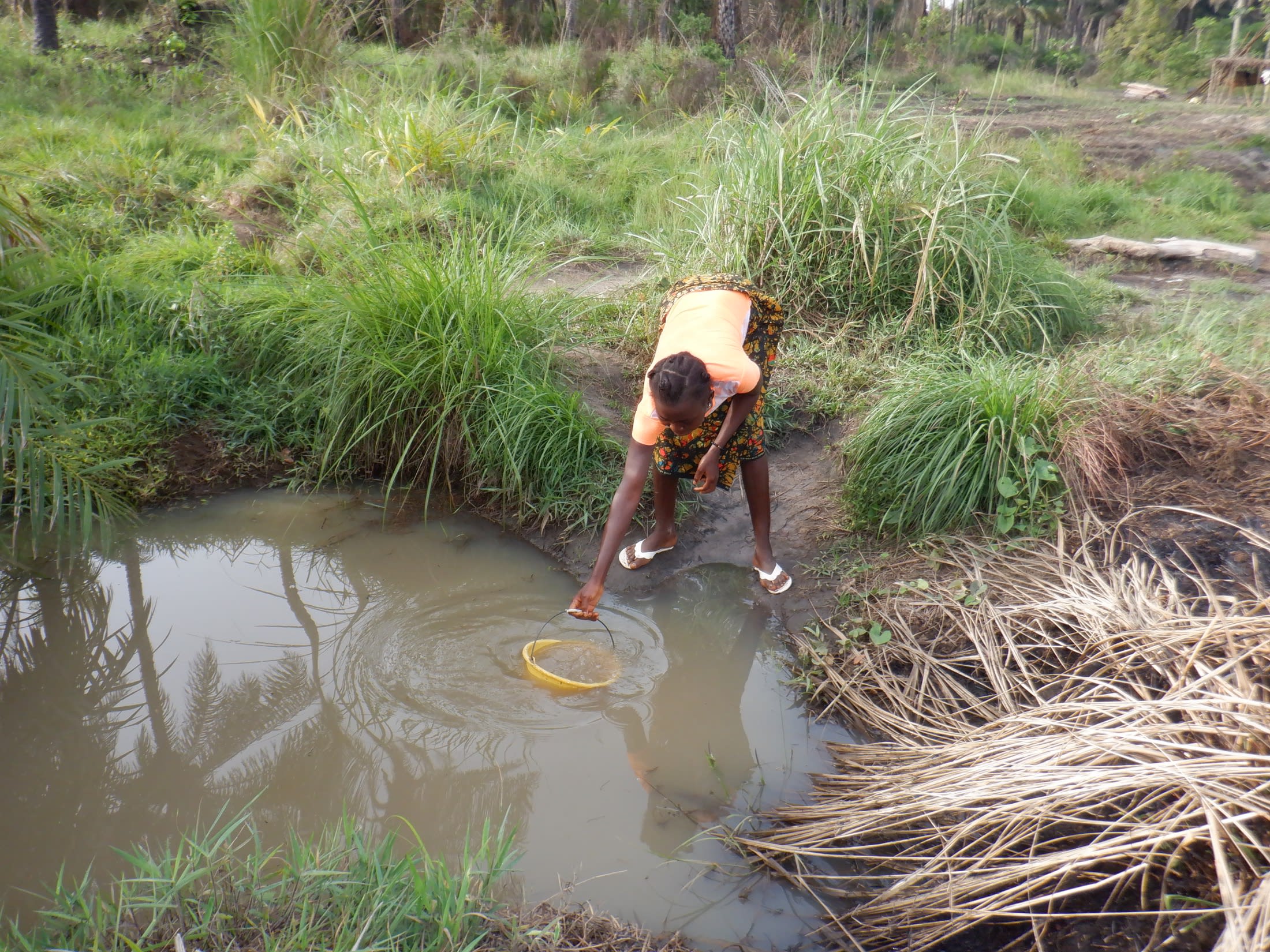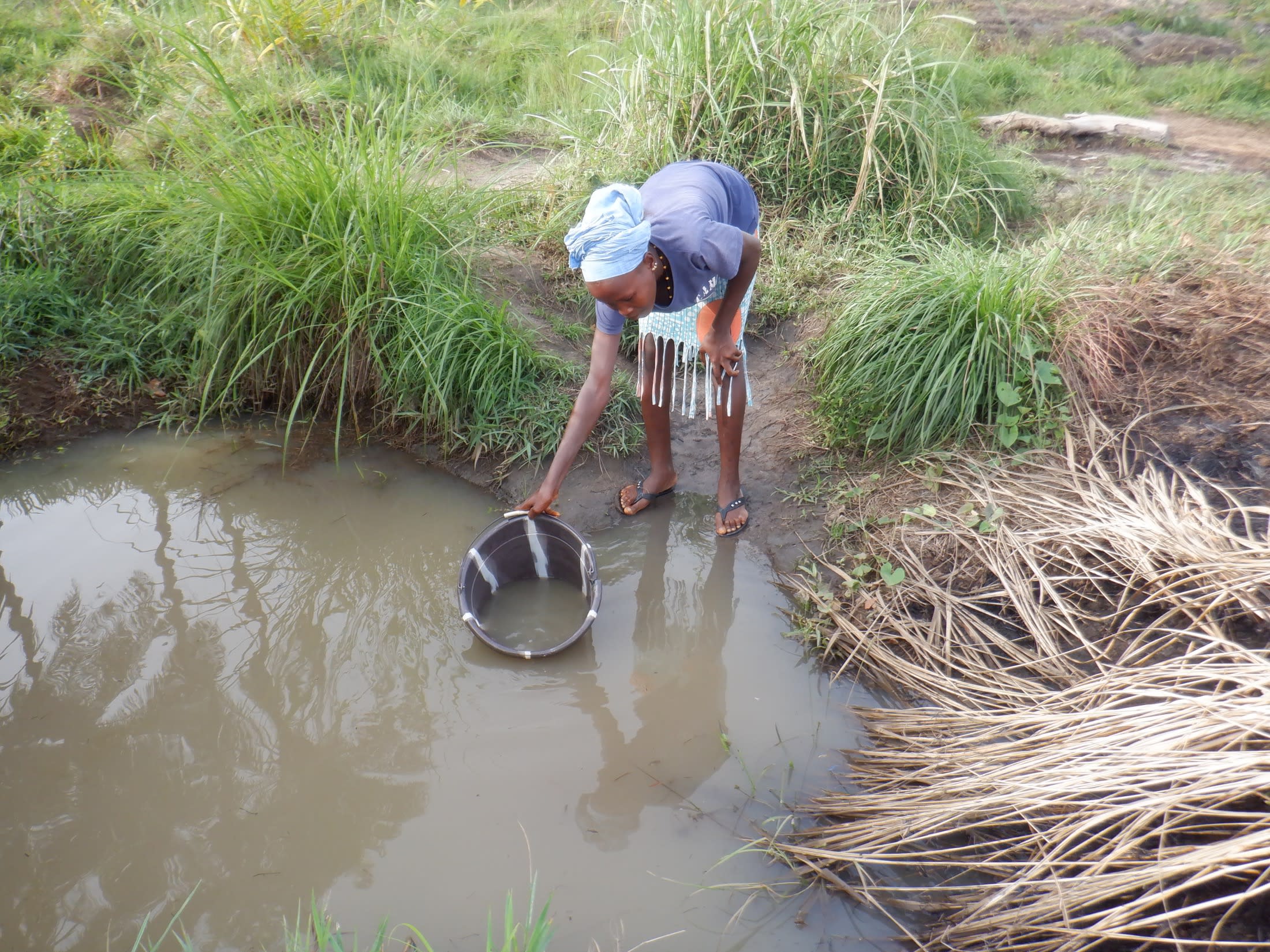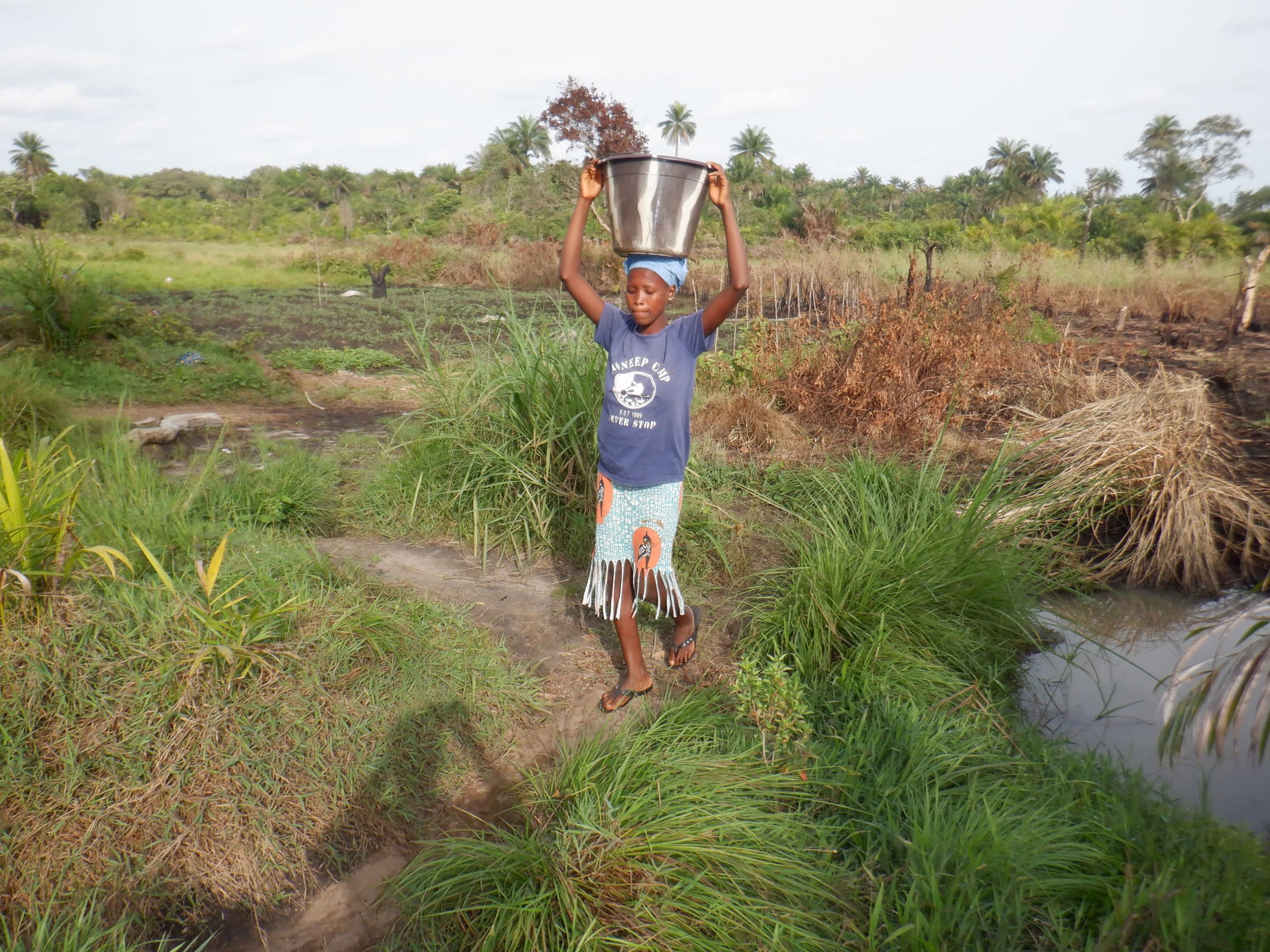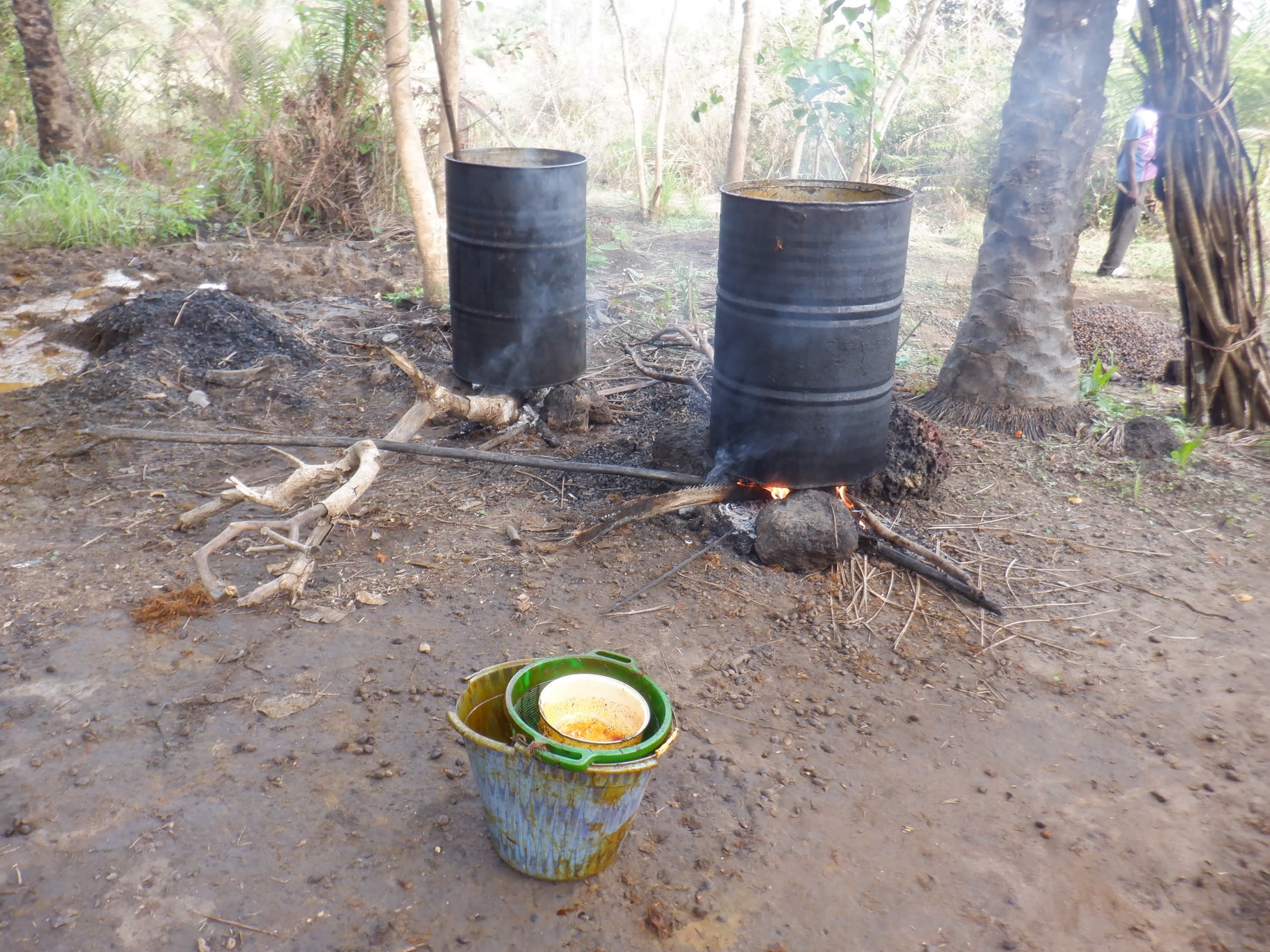The water situation in Amaraya is not easy for the 186 people who live in the community. Presently, the main water source, a protected hand-dug well with a hand pump, is non-functioning, and even with repairs would still be seasonal due to its shallow depth.
"The water situation in this community is really affecting me. Initially, I used to fetch water from the main source. Fetching water from this source is very difficult because of the daily congestion of people at the water point. I would spend hours waiting to fetch water. By the time I finish fetching water, I would be very exhausted. Most times, I [would] not be able to get the amount of water I need, and this will make it difficult for me to complete all the work at home as required. The frequent use of the protected hand-dug well has led to its breakdown," said 32-year-old farmer Yankay Kamara, shown below collecting water.

"Ever since the well became faulty, I have been fetching water from the alternate source," said Yankay.
Although Yankay and other community members rely on the water they can collect from the swamp, it presents its own unique challenges. The water is easily stirred up and becomes cloudy with sediment, causing delays that increase as people wait for the water to settle and become less muddy before filling their water containers. Other plans for the day get set aside, and things intended to be achieved for the day get left undone. The swamp is also far away and a long, tiring journey, especially for those carrying heavy, full water containers.
"The main water source I used to fetch water from runs out of water. Presently, the well is dry and faulty," said 16-year-old Uthoma K., shown below collecting water at the swamp. 
"The time spent walking to the swamp is too long. The reason for this is because of the distance, [but] fetching water from this source is [also] time-consuming," said Uthoma. "Apart from [the] walking distance, the long waiting time also hinders me [from fetching] water on time. This delays my time of cooking [and] bathing, and even affects the wood I normally sell. By the time I do two or more trips, I will be [too] exhausted to carry on with splitting the wood for selling."
"Similarly, I find it hard to wash the napkin (diaper) of my four-month-old child," Uthoma continued. "This task is difficult to do because of the lack of water. The napkin must be clean at all times, and this can only be attained if there is sufficient water."

"Fetching water from the swamp is really time-consuming because of the distance," Yankay said. "This is affecting my trade. I normally produce palm oil in [a] large quantity, [but] the processing of the palm oil requires a lot of water. I normally fetch ten containers of water, which is equivalent to one drum of water, to do the boiling of the palm kernel."

"Then I fetch another ten containers of water to be used at home," Yankay continued. "Fetching this amount of water requires a lot of labor. Imagine. This is not easy, especially when the people will be many at the swamp."
Most people wake up very early in the morning to get to the water source, hoping to fetch water before others step into the water and cause it to stir. It is mistakenly believed that during the morning hours, the water will be clean, but as soon as another water user fetches water, the water will become dirty.
Not surprisingly, this urge to collect the swamp water early has led to congestion at the water point during peak hours, causing people to have extraordinarily long wait times or leave with an insufficient amount of water because others coming behind them are impatient. Sometimes people leave before they are ever able to fetch water at all because they must attend to other responsibilities.
Yankay also shared that she finds it hard to get enough water to maintain her hygiene during her monthly menstrual cycle. "We, the women, are always at the forefront when it comes to the use of the water. Failing to maintain good hygiene will make my husband be far away from me," she said.
Not having water easily accessible is causing delays and putting people's livelihoods at stake, which is a cost too expensive to pay.
"I wholeheartedly believe that the new well will be a big blessing to me. All the water challenges I used to face will definitely become history," concluded Yankay. Like Yankay speculated, hopefully installing a new well in this community will make the current water challenges a problem of the past.
What We Can Do:
New Well
Where we will be drilling is centrally located and will relieve many people of the long journey to fetch water and the challenge of accessing clean water.
Our team will drive over the LS200 mud rotary drill rig and set up camp for a couple of nights. Once the well is drilled to a sufficient water column, it will be cased, developed, and then tested. If these tests are positive, our mechanics will install a new India Mark II pump.
By drilling this borehole, Amaraya and the surrounding community will be provided with plenty of accessible, clean drinking water.
Training
There will be hygiene and sanitation training sessions offered for three days in a row.
Community members will learn how to make a hands-free handwashing station called the "tippy-tap." We will use these tippy taps for handwashing demonstrations and will also teach about other tools like dish racks and the importance of properly penning in animals. We will highlight the need to keep restrooms clean, among many other topics.
This training will also strengthen a water user committee that will manage and maintain this new well. They will enforce proper behavior and report to us whenever they need our help in solving a serious problem, like a pump breakdown.







 Rehabilitation Project
Rehabilitation Project























